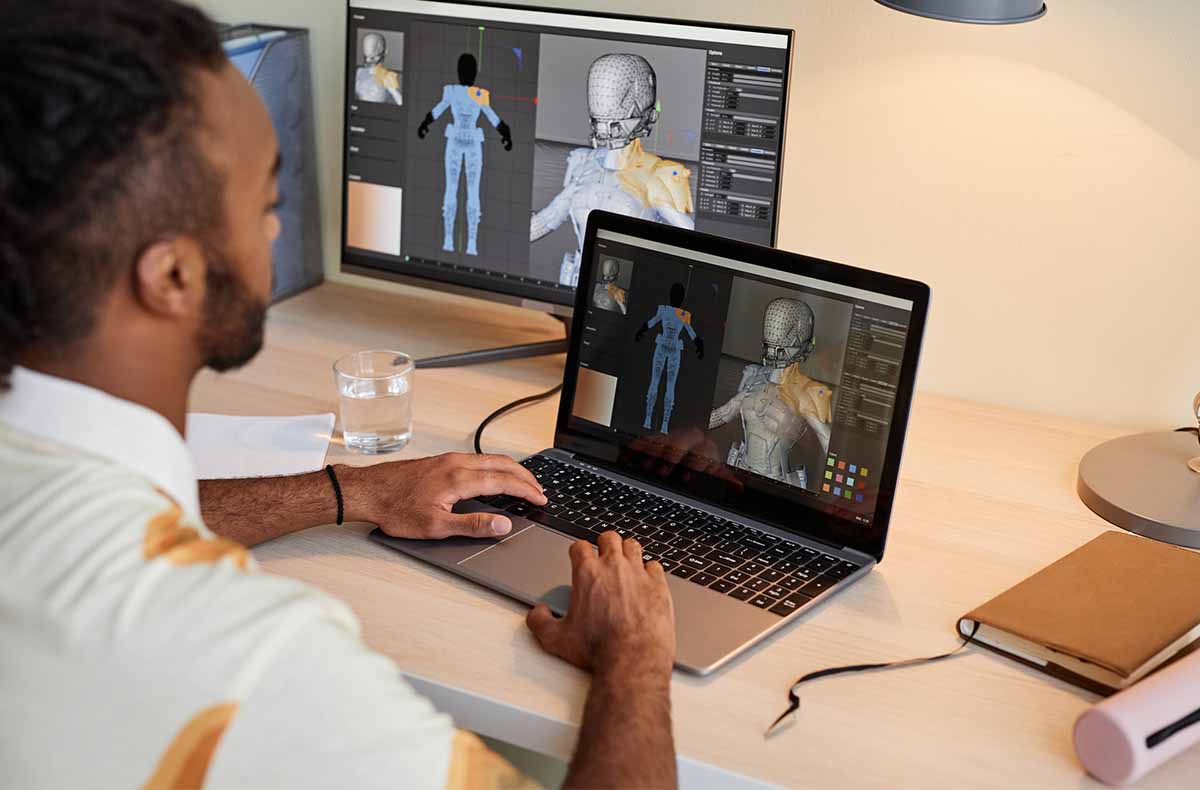
If you haven’t read the start of our journey, you can find it here.
A game of threes
So, we have three unique ways to get ideas onto the screen, three experienced teams of engineers, and, more importantly, three audiences of dedicated animators, designers, and engineers who rely on each of our software platforms for their jobs. Entire studio pipelines, engineering firm workflows (like NASA), and global courses in art and design schools depended on us to continue innovating and making giant leaps in our technology.
Now, however, we faced a challenge to take amazing talent and develop a way to create a new system that combined the best of the three platforms while remaining competitive in the marketplace and meeting the needs of our ravenous user base. Our clients, who were competing for high-end projects using our tools and often getting into bidding wars for prestige projects, were imagining a steep learning curve.
As the co-founder of Wavefront, and the ambassador for the newly formed company, working with our global user base fell to me. Combining our codebases and developing a new platform took much longer than we thought. For three years, I chaired customer councils and user groups in the diverse industries of our client base.
Those years saw me travel around the world, assuring our clients we had their best interests at heart and the combination of jewels from each system would be theirs for years to come. We had an annual check-in at our industry’s biggest conference, SIGGRAPH, to give progress reports and assure our customers the software, now dubbed Maya, would be coming soon.
Moving to the testing phase
Near the middle of the first year of development, it became clear our collective teams had figured the most significant problems out. Combining the talent of our engineers with the goodwill of our users and robust communication pipelines we’d established, we were able to get software that was “done enough” to give to one of our earliest partners, Disney, for use on the film Dinosaur (which had begun production in 1994, a couple of years earlier) to tackle the challenging task of animating the faces of the dinosaurs. This small piece of the production pipeline allowed us to test the software in the demanding reality of the studio environment.
Around this time, I was due for a sabbatical—one of the perks of working in software companies that was way better than pizza and foosball tables. For my sabbatical, I rented a room in a downtown Santa Barbara office building and installed myself, my SGI, and a copy of v0.5 of Maya. We didn’t have manuals yet as the software was still in flux, and what I wanted to do was challenge myself to be able to pick up the mouse and archeologically dig through the menus and create images, much like I’d done in 1984 in our first six months of operation when I’d get weekly builds of new code from our CTO and co-founder, Bill Kovacs. We didn’t have manuals then, either.
My six-week sabbatical was a turning point for us. It showed me where we had succeeded and, as importantly, where we were failing and had much more work to do
My role as ambassador was to be a tight conduit between our users and engineering teams. My credibility with both groups helped us create software still in use across industries worldwide.
I shared this spirit of diving in and figuring it out with our customers, and it was what endeared them to me, even when we were very late in delivering Maya. The combined feedback we provided to the engineering teams resulted in the most powerful software of the time.
The lesson learned from the journey, which started with the merger in 1995, and ended when we shipped V1.0 in February of 1998, nearly four years to the day Wavefront and Alias announced the merger, was one of understanding the importance of deep empathy and strong relationships, rather than a relying on a series of transactions by the sales team.
I had countless conversations with customers worldwide who’d invested thousands, sometimes millions, of dollars, outfitting studios and training hundreds of modelers, animators, and renderers. They didn’t want to lose those investments. Those conversations helped me bring back comments, while initially colored by fear and anxiety, into productive messages that guided our internal teams and provided solace to our customers.
How Maya proved itself on a global scale
In 2003 Maya received an Academy Award from the Motion Picture Academy for Technical Achievement, including individual Scientific and Technical Achievement Awards to members of the technical teams over the years. The 1990 Academy Award for Visual Effects went to Wavefront customer Metrolight for their groundbreaking 16 seconds of CGI in the film Total Recall. Alias was used to create the liquid metal villain in ILM’s Terminator II in 1991. Since Maya was released, every film that won a Visual Effects Oscar used the software to some extent, pushing the boundaries of what could be done every year.
Integrating software platforms, which had taken ten years each to develop, in just four years was an arduous task and one which has stood the test of time. Maya continues to be a key component of most major production studios’ digital pipelines and, as a foundational tool, was used, along with custom software developed at WETAfx, on this year’s Oscar-winning visual effects for the film, Avatar: The Way of Water.
Decisions made during those developmental years have allowed Maya to remain the number one CG platform today due to its flexibility, reliability, expandability, and ubiquity in training programs worldwide.
Despite working in a field of highly technological innovation and constantly developing new ways to recreate reality, our success relied heavily on maintaining deep relationships with animators and prioritizing their success.



